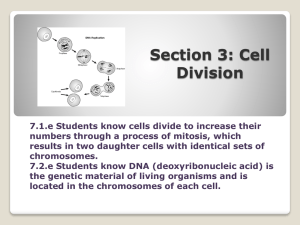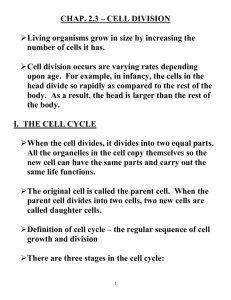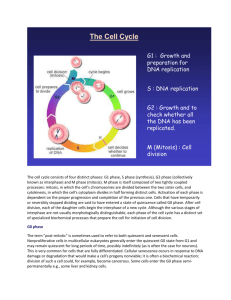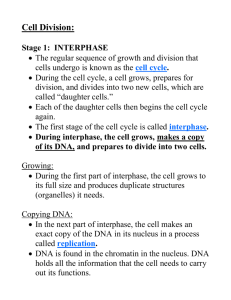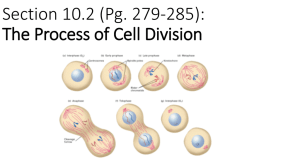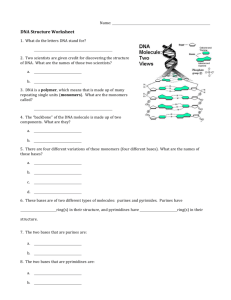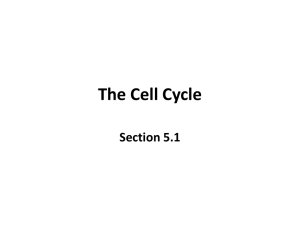The Cell Cycle
advertisement
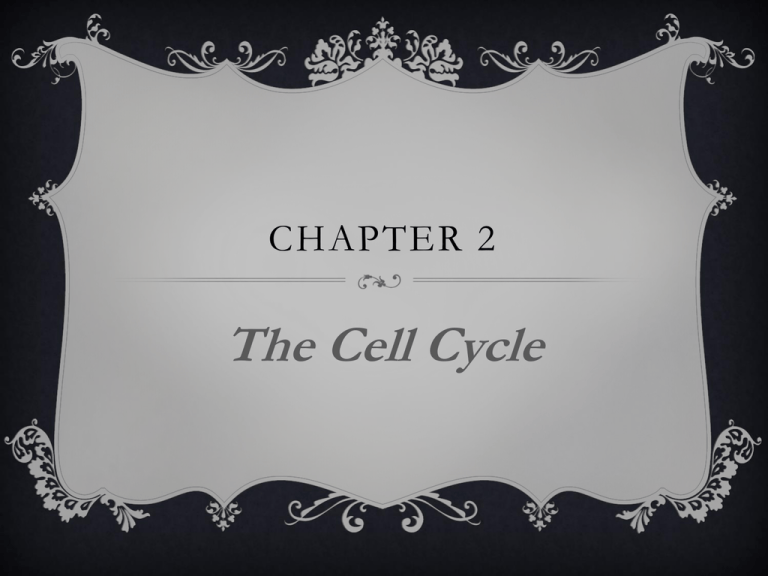
CHAPTER 2 The Cell Cycle WHAT IS THE CELL CYCLE? Definition – the regular sequence of growth and division the cell goes through STAGE 1 Interphase (the longest part of the cell cycle) 3 THINGS THE CELL IS DOING DURING INTERPHASE 1) The cell grows to its mature size 2) It makes a copy of its DNA 3) Prepares to divide into 2 cells REPLICATION Definition –making an identical DNA replication ensures that copy of something each daughter cell will have all of the genetic information it needs to carry out its activities. MOLECULE OF DNA Looks like a twisted ladder or James Watson and Francis Crick spiral staircase were the two scientists who figured It is called a “double helix” out the structure of DNA. The sides of the DNA ladder are made of phosphates and deoxyribose (sugar). The rungs are made of nitrogen bases: adenine pairs with thymine guanine pairs with cytosine DNA REPLICATION The Flowchart The two sides of the DNA molecule unwind and separate (like a zipper) Nitrogen bases floating in the nucleus pair up with the bases on each half of the DNA molecule. When the new bases are attached, two new DNA molecules are formed. DNA REPLICATION The DNA molecule is unzipping and the nitrogen bases find their “partners” to join with. When this is complete there are two identical DNA molecules. STAGE 2 Mitosis (has four steps – PMAT) WHAT IS MITOSIS? The stage when a cell’s nucleus divide into two new nuclei STEP 1 : PROPHASE chromatin in the nucleus condenses to form chromosomes. Structures called spindle fibers form a bridge between the end of the cell. The nuclear membrane breaks down. STEP 2 : METAPHASE The chromosomes line up across the center of the cell. Each chromosomes attaches to a spindle fiber at its centromere, which still holds the chromatids together. (Helpful hint : the military step) STEP 3 : ANAPHASE The centromeres split and the 2 chromatids separate. One chromatid moves along the spindle fiber to one end of the cell while the other chromatid moves to the opposite side. The cell becomes stretched out as they pull apart. (Helpful hint: the angry peanut step) STEP 4 : TELOPHASE The chromosomes begin to stretch out and lose their rod-like appearance. This occurs in the 2 regions at the ends of the cell. A new nuclear membrane forms around each region of chromosomes. STAGE 3 Cytokinesis CYTOKINESIS The cell membrane pinches in around the middle of the cell so two cells are formed. The two cells that are formed are called daughter cells. At the end of cytokinesis, each cell enters interphase and the cell cycle begins again. L E N G T H O F T H E C E L L C YC L E Interphase lasts the longest out of the three stages. The human liver cell is in interphase for about 21 hours because it has 9 hours of growth, 10 hours of DNA replication and 2 hours to prepare to divide. (9+10+2=21) REVIEW 1)What are the three stages of the cell cycle? 2)What are the four steps of Mitosis? 3)The cell that starts the cycle is called a cell. 4)The two cells that are formed by the end of the cycle are called cells. 5)Adenine pairs up with Cytosine pairs up with

